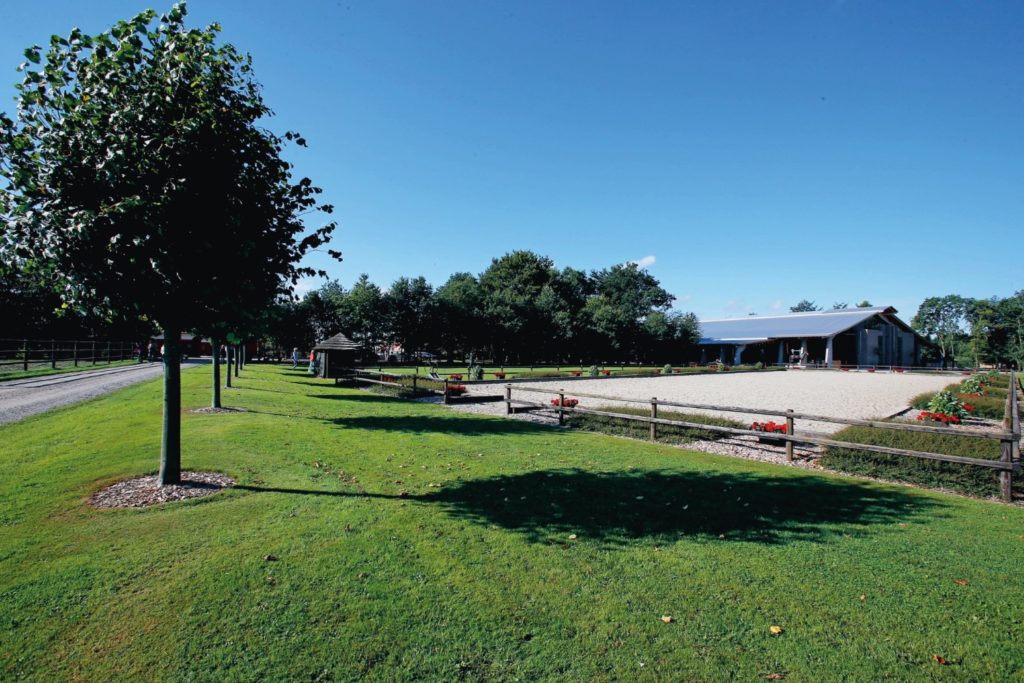One of the most severe diseases for horses
DOTT.SSA EMANUELA VALLE
DIP. SCIENZE VETERINARIE – UNIVERSITÀ DI TORINO
EBVS® European Specialist in Veterinary
and
Comparative Nutrition
No owner would ever want to face the hard reality of laminitis. The pain that the horse feels is unbearable: it is a sharp pain in the feet that makes it difficult for him to walk and, in some extreme cases, can even prevent the horse from standing.
The importance of early detection of laminitis is the first essential step in effectively addressing this potentially devastating disease.
Recognizing laminitis allows the horse ownerto timely start the necessary care and take targeted preventive measures, significantly increasing the chances of complete recovery of the horse.
It is not always known that laminitis is not only a problem of the pony and some obese horses. Unfortunately, it can also affect sport horses of any discipline causing effects that could drag over time and compromise their sporting career.
The most common causes of laminitis in the sport horse are:
Laminitis caused by Inflammatory Systemic Diseases
Systemic inflammatory response syndrome (SIRS), also known as systemic inflammatory
disease, is an inflammatory reaction that can manifest itself in various pathological
conditions, including infections such as pneumonia, flue, and colitis.
Basically, whenever the
horse faces an infection, there is a risk that he will develop SIRS and, as a result, may also
deteriorate into laminitis.
It is vital to ensure that the horse is vaccinated against diseases
for which vaccines are available, and that he is in a state of optimal condition.
Competitions
and travelling can increase his stress levels, making him more susceptible to health issues.
Loading laminitis
Whenever a horse is on ‘three legs’, meaning he has a condition that does not allow him to
support a limb, such as a serious lameness, a wound or a fracture, he is at risk of developing
laminitis.
In these situations, the other feet have to bear more weight, and this creates
serious stress on the hooves. In particular, the contralateral foot is subject to greater stress.
This is probably related to the fact that the increased weight alters the normal blood flow in the hoof by exposing the edges of the foot to greater tension.
An average of 10 to 20% of
horses that have a fracture that limits the load of a limb can develop laminitis.
Road laminitis
It is an old expression, that reminds us how the work on hard and unsuitable surface can
cause inflammation and pain in the foot.
Often in these cases the lameness is not so obvious, but the horse typically walks on eggshells.
It is caused by the rigid impact of the forces created in the foot when the ground on which it works is too hard or compact.
This would appear to cause impaired capillary perfusion within the lamellae which causes inflammation of the hoof tissues.
Metabolic laminitis
It’s normally caused by two issues, such as PPID and metabolic syndrome.
PPID is an intermediate pituitary dysfunction, which alters hormonal levels, especially ACTH
hormone levels.
This condition, often called Cushing, manifests itself with symptoms such as hirsutism, loss of muscle mass, regional fat, polyuria, polydipsia, and chronic laminitis.
Treatment consists of using specific medications prescribed by the vet.
Metabolic syndrome is a frequent cause of laminitis in overweight and obese horses,
especially ponies or those with a slow metabolism.
This syndrome is characterized by
dysregulation of the hormone insulin, which causes insulin resistance and a general
inflammatory state, increasing oxidative stress and contributing to laminitis.
Treatment
involves weight loss through a targeted diet prescribed by the vet, which reduces sugars
such as starch and total calorie intake of the diet.
Focus on antioxidants
In cases of laminitis and in all situations when any stress in the feet wants to be avoided, it is common to use antioxidants. In these situations, blood circulation is impaired, and the production of free radicals increases, causing significant damage both locally in the lamellae and in the blood. Horses with chronic laminitis can have three times the average incidence of free radical damage. Antioxidants are used to counteract these damages, stabilizing free radicals and making them not dangerous. Antioxidants are produced naturally in the body, but they are also provided by diet. Among vitamins, the most important antioxidant is vitamin E, followed by vitamin C.
There are also important nutritional sources of antioxidants in addition to vitamins. Among the natural extracts we find turmeric. The beneficial effects of turmeric are mainly related to its anti-inflammatory properties. It is also very rich in bioactive compounds beneficial to the body that can be a valuable nutritional support in various conditions, not only related to inflammation, but to stress and increased needs of the sport horse.

